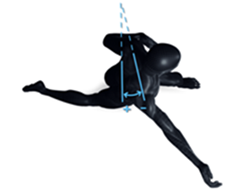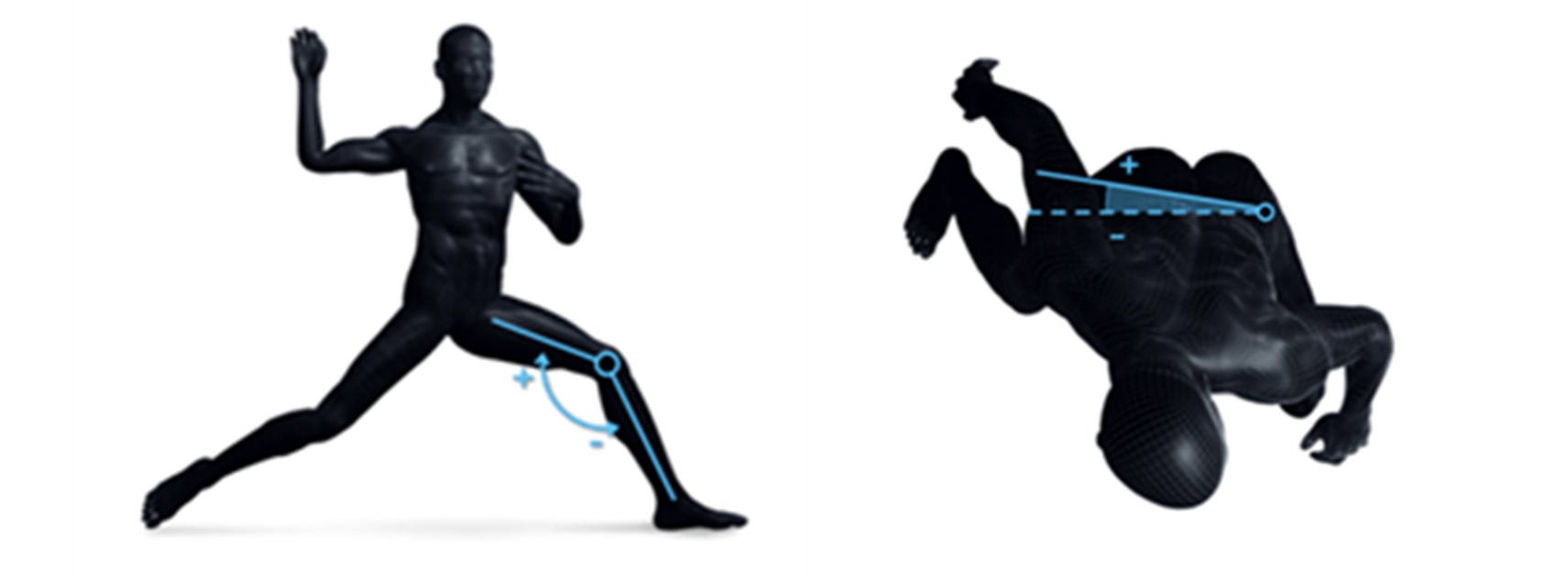Today, we’re lifting the hood a tiny bit…. Much is written about the value of data and its potential application to training pitchers. But a full-blown motion capture system takes this type of discussion to a whole new level. A typical mocap session involves attaching over forty markers to a pitcher’s body. After a pitch is thrown off the mound, the system combines the views of a dozen or more cameras to create a 3D avatar of the athlete, which then allows for preparing angular measurements of various body parts, up and down the kinetic chain. What happens to all that data from the avatar is what we are going to review here…
Before we proceed, as most of you already know (but worth mentioning again), while we are big believers in using technology, the human element should never be replaced, just simply “enhanced”. So, for us it’s not motion capture vs. the naked eye. It’s all about increasing the amount of information we can get our hands on, in order to make the best decisions for each athlete. And there are elements that the human eye can not see when the total pitching movement takes approximately 1 sec.
So… What Happens After All That Data is Collected?
The next step in the process after a motion capture session is a bit of a black box that people rarely get to observe. Athletes go through the testing but do not quite realize the amount of data that is generated from our Qualisys motion capture system. The data is synthesized into a coherent summary comparing each measurement to a target range (based on our database) which allows us to analyze and identify the markers that contribute most to performance gains and what seems to cause backslides in ability or even worse, injury. The measurements are recorded at foot plant (FP), maximum external rotation (MER) and release point. For analysis, we break this up into four distinct categories for further analysis:
-
- Arm / Shoulder – These metrics are looking to capture the movement in the shoulder and elbow during abduction or flexion. In essence they measure the arms movement through space from the “take-away” phase (ball out of glove), through release at designated times along the path. Some of these are shoulder abduction, external rotation, horizontal abduction, and elbow extension/flexion to name just a few.
-
- Trunk Movement – These metrics record the trunk, torso, pelvis, and hip movements, especially during the stride and acceleration phases as well as at foot plant (FP). This can go a long way in determining things like hip and shoulder separation (both torque and timing), early upper-half rotation and efficient distribution of an athlete’s COM (center-of mass).
-
- Lower Half – We all know that much of what happens up top in the delivery is initiated through the lower half. Often, making lower half adjustments alone can positively change arm action metrics. Some of the “big players” we look at are timing of the pelvis, lead leg flexion and extension and foot positions from FP to ball release.
-
- Angular Velocities – These metrics record the angular velocities at which the knee, pelvis, torso, and shoulder are moving / turning. They assess how velocity is built up the kinetic chain from one to the other, provided by a graph which demonstrates how these body parts speed up and slow down as the next part begins the transfer of energy. Quite honestly, we have found the biggest correlations to velocity when looking at angular velocities and timing as compared to static positions in the delivery.
Benefits of Motion Capture
With that said, let’s quickly review some of the benefits of motion capture and why the information can be extremely valuable. There is a great deal that you can conclude from a motion capture analysis that is not visible to the naked eye. Here is a brief list, among others:
3D View (front, back, top and side)
The following is a more complete summary of many of the metrics in each of the four categories listed above that we analyze in a mocap. There are several dozen specific metrics we track and each one can highlight potential issues that we can address through programming either inside the nets or in the gym. This is about as sophisticated an analysis as you can get.
You live too far to train with us in-house at RPP? You can now train with us on a REMOTE basis. Simply click below and schedule a phone call.
Arm / Shoulder
Below are two examples with descriptions:
Shoulder ER @FP (Late Riser) – Low ER otherwise known as a “late arm” forces the athlete to have to lead with the elbow creating a “push” and increasing the risk of injury to the shoulder and/or UCL. Excessive or “high” degrees of ER can put the arm in a compromised position to accept force at foot plant, leading to injury. To clean this up, we need to clean up any arm action issues prior to this point.
Shoulder Horizontal Abduction @FP (scap load) – Performing a good scap load helps resist early trunk rotation while maintaining a good trunk stack into foot plant. It is also a key player in producing good hip/shoulder separation.
Here are a few other metrics:
-
- Shoulder Abduction @FP
- Shoulder Abduction @Release
- Elbow Flexion @FP
- Max Shoulder ER @FP
- Elbow Flexion @Release
Trunk Movement
Below are two examples with descriptions:
Torso Counter Rotation @LegLift – Beginning the linear move with a slightly counter rotated shoulder/torso at peak leg lift gives the athlete a slight running start to help achieve a stable and stacked spine. It is important to note that too much (high) or too little (low) counter-rotation can cause timing issues later in the pitching delivery.
Pelvic Tilt @FP – While creating a posterior pelvic tilt during the loading phase helps better load the glutes, creating an anterior pelvic tilt at foot plant is needed to set the angle for which the spine will eventually flex to.
Here are a few other metrics:
-
- Trunk Rotation @FP
- Trunk Stack / Forward Tilt @FP
- Trunk Lateral Tilt @FP
- Trunk Forward Tilt @Release
- Hip-Shoulder Separation @FP
Lower Half
Below are two examples with descriptions:
Pelvic Rotation @FP – “Late” pelvis rotation will cause the hips to be too “closed” at foot plant, making it hard to facilitate rotation while “early” pelvis rotation will cause the hips to be open too much and can negatively affect the stability of the lead leg as well as putting stress on the anterior shoulder. We look for the hips to be partially open at foot plant.
Pelvic Rotation Angle @Release – Pelvis rotation at release can tell us about lead leg positioning during blocking phase. A pelvic angle too closed will generally put athlete in a position that compromises force transfer up into the core. On the other hand, a pelvis angle too open at release puts lower half in a more compromised position, making it harder to get an efficient block, many times rolling off to the side.
Here are a few other metrics:
-
- Lead Leg Foot Position @FP
- Knee Flexion @FP
- Knee Flexion @Release
Angular Velocities
Below are two examples with descriptions:
Max Front Knee Ext. Angular Velocity – The ability to decelerate (accept force) and the speed at which the knee/leg extends (produces force) when blocking is a main player in facilitating hip and ultimately torso rotation up the chain. It also has one of the highest correlations to throwing velocity of any metric that we measure. The closer to foot strike that extension occurs the better.
Max Pelvis Angular Velocity – This metric measures how fast the pelvis is rotating and sending force up the chain. While there is an appropriate range that can be qualified as the norm, more is not always better especially in younger athletes who produce faster velocities due in part to smaller pelvis circumferences. Ideally, we like to see peak velocities occur at or after foot strike and is facilitated by a good lead leg block (post up).
Here are a few other metrics:
-
-
- Max Torso Angular Velocity
- Elbow Extension Velocity
- Max Shoulder IR Angular Velocity
- Torso Velo – Pelvis Velo
-
The RPP Motion Capture Lab
By Nunzio Signore and Bahram Shirazi (Owners at RPP Baseball)
You live too far to train with us in-house at RPP? You can now train with us on a REMOTE basis. Simply click below and schedule a phone call.






